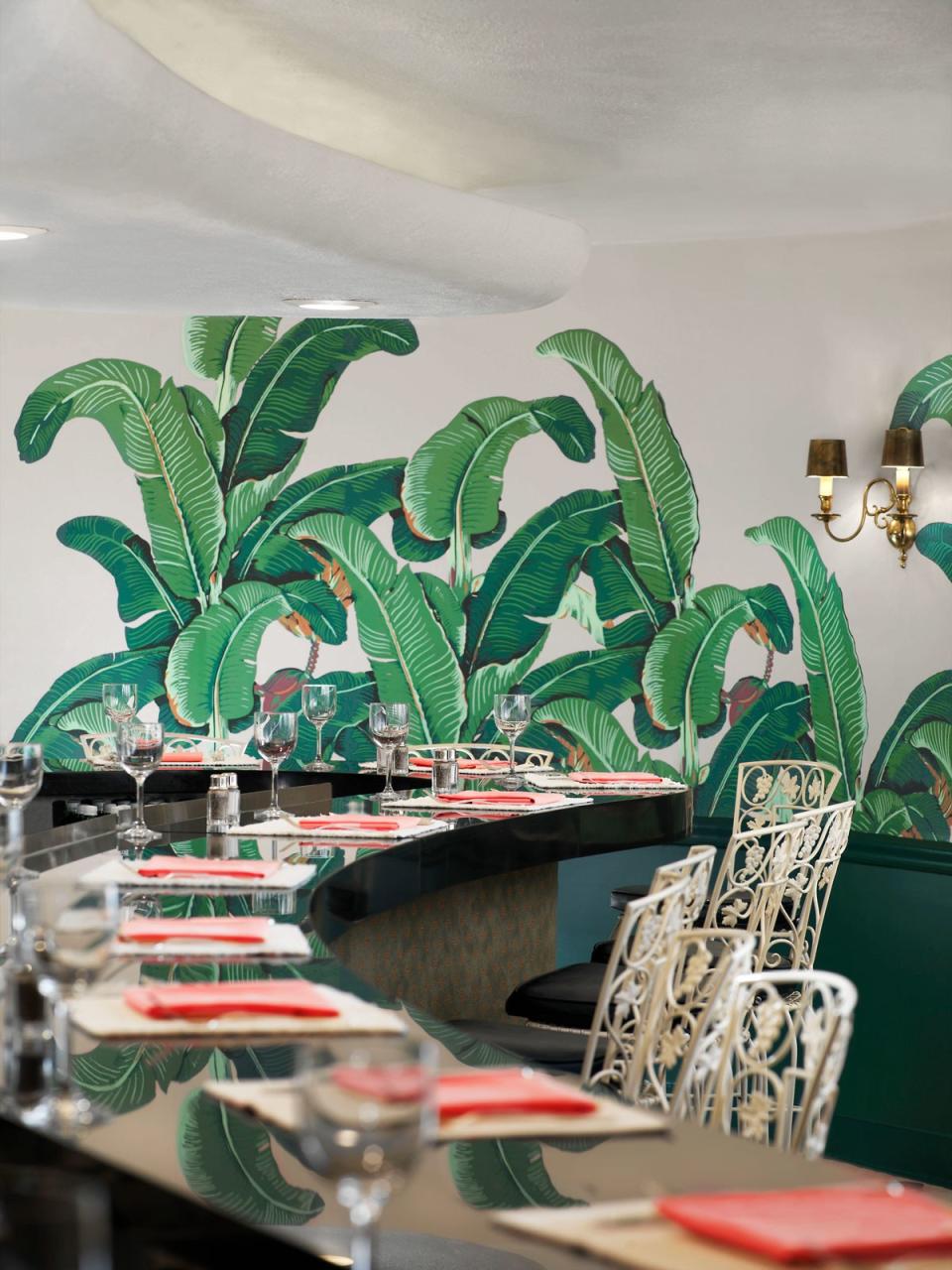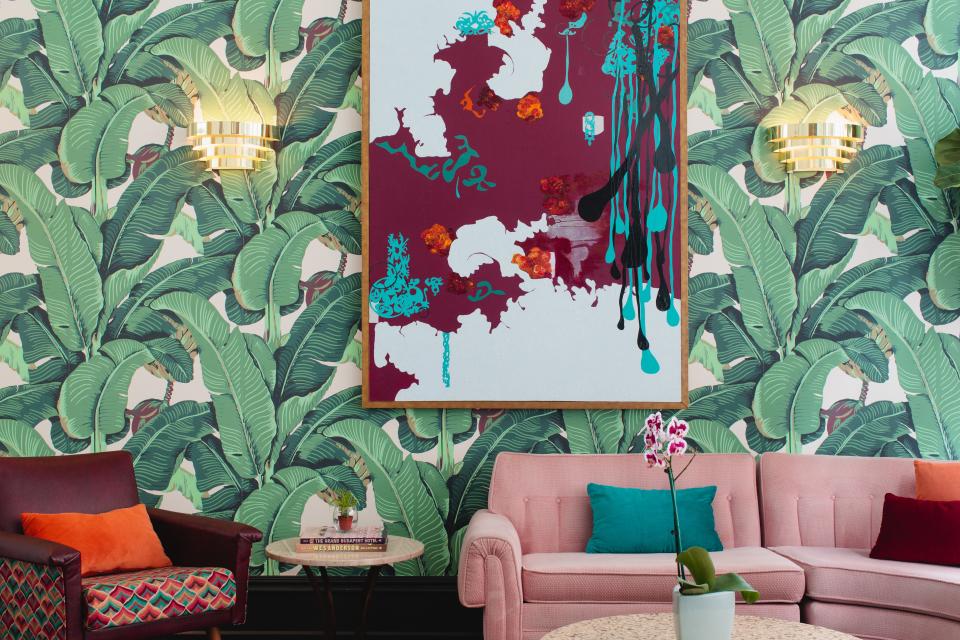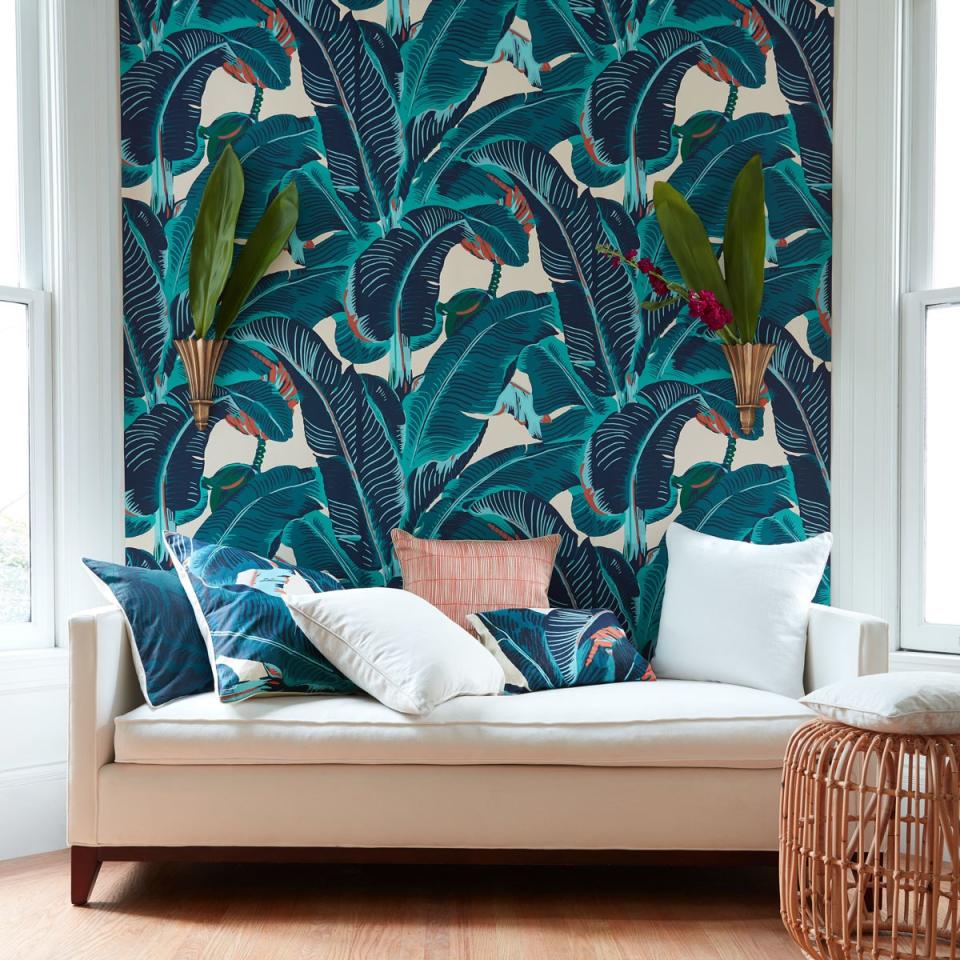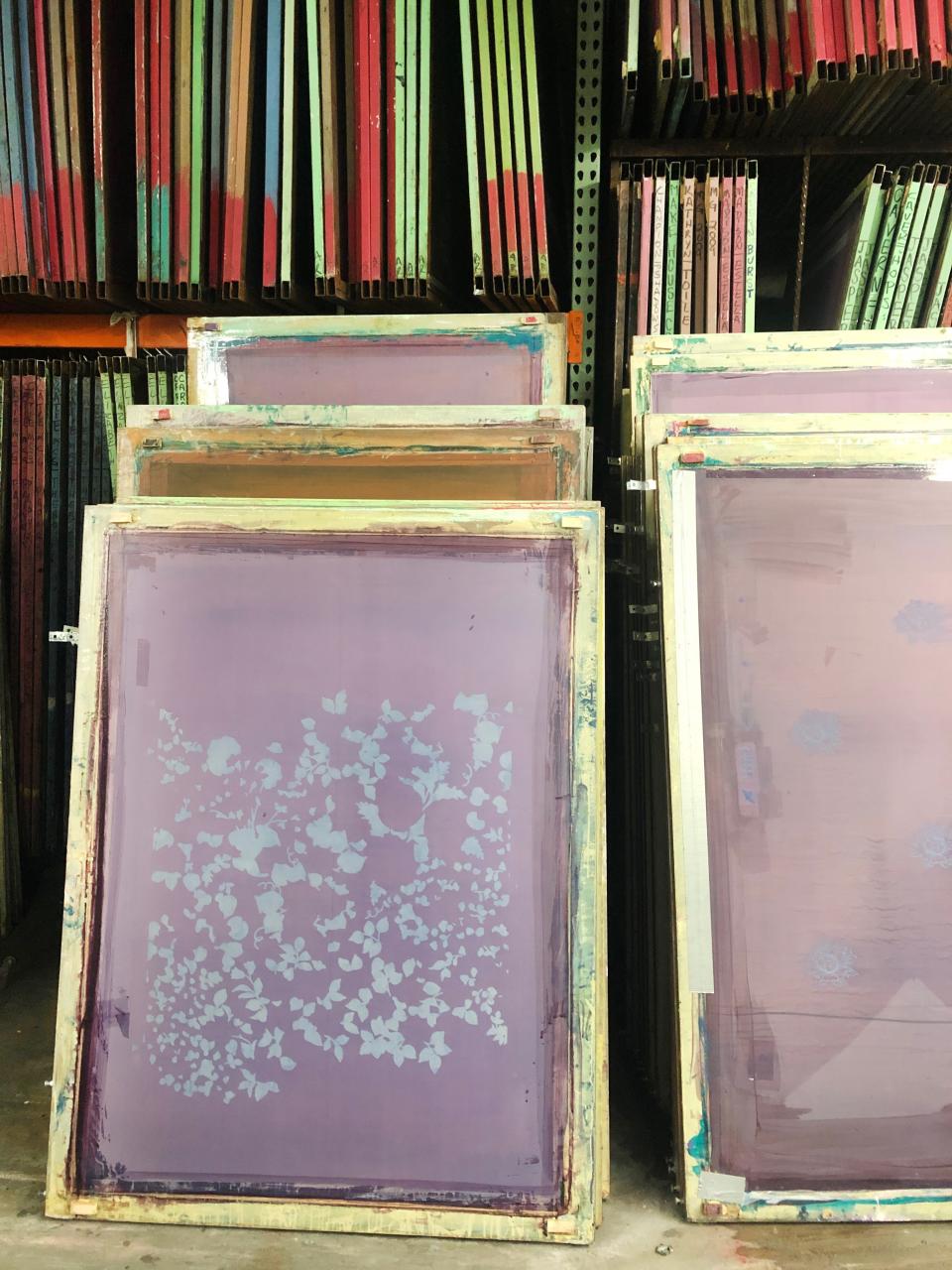The True Story of CW Stockwell and the Famous Beverly Hills Hotel Wallpaper
The story behind Martinique—one of the most recognizable wallpaper designs ever produced—is, more often than not, told inaccurately. Many sources attribute the iconic banana leaf pattern to Hollywood costume designer Don Loper. While it’s true that Loper, who reinvented himself as an interior designer in the 1940s, used the pattern to reinvigorate the interiors of the Beverly Hills Hotel, he didn’t design the print. There’s also a lingering misconception about who actually owns and produces the pattern—but that’s all about to change this week with the relaunch of CW Stockwell.

Katy Polsby, the brand’s CEO and owner, is resetting the trajectory of the company, which settled into relative obscurity over the past several decades. Polsby and her family have picked up where the brand’s third-generation owner, Remy Chatain Jr., left off when he died in 2013.
The Los Angeles–based fabric and wall coverings company has been around for 114 years, and, while you may not know CW Stockwell, it’s been a major influence on interior design—particularly in Southern California—for the better part of the 20th century. Clifton W. Stockwell founded his namesake interiors company in 1905, after relocating to Los Angeles from Armstrong, Ohio, where he worked as a pharmacist. Inspired by his regular trips abroad, Stockwell initially manufactured reproductions of European patterns, particularly those from France. “Wallpaper in that era was a very regional business,” explains Polsby. “My suspicion is that he was one of the first people to bring that European aesthetic into Southern California.”
The company grew quickly, and by the early 1930s Stockwell was producing its own patterns. In 1935, his daughter Lucile, after studying interior design and architecture at Parsons in New York, as well as art in Europe, joined the business as president. Soon after, her husband, Remy Louis Chatain Sr., came on board. “As a duo they had a very unique set of complementary skills,” says Polsby. “While she was artistic and had all the design training, his background was in merchandising, so he understood what was important from a production and processes standpoint.” According to Polsby, this was the turning point. “We attribute a lot of the early success of the company to Lucile herself—she had the revolutionary idea to develop proprietary patterns and collections, and not be limited to reproductions that people had seen over and over again.”

The duo debuted their first Trend of the Times collection around 1940, and continued to iterate on it for many years. The collection demonstrated a wide breadth of patterns, from small ditsy florals, stripes, and plaids, to large-scale chintz flowers and amazing bold geometrics. “They came out with this incredibly insouciant, wildly spirited group of patterns,” says Polsby. “We have ones like Egg Money, which depicts a group of farmers celebrating a great day on the farm, dancing around and gathering eggs to sell at market. It’s the spirit of the time that’s imbued into these unique patterns, and what set CW Stockwell apart from other brands.”
Here’s where we can start to set the record straight. In 1941 Lucile and Remy had the idea for a large-scale tropical pattern. They enlisted their friend and neighbor, the botanical illustrator Albert Stockdale, to bring their vision to life. The result, Martinique, was introduced in CW Stockwell’s 1942 collection, Wallpaper Is Art.
Don Loper, Hollywood’s Golden Age costume designer, was deep into his second act in 1947, working as an interior designer diligently updating the look of the Beverly Hills Hotel. CW Stockwell was a regular resource for Loper, and Martinique was the pattern on the walls of its showroom office in Los Angeles. In fact, Stockwell and its showroom were featured that year in Architectural Digest, with Martinique front and center. The pattern was finally installed in the hotel in 1949.

In 1950, the couple’s son, Remy Louis Chatain Jr., joined the company. Like his mother, Remy Jr. studied design at Parsons and art in Europe. He also spent time traveling through Asia during the Korean War, and developed an appreciation for the art and culture that he brought back with him. “He really helped grow the pattern library, and in addition to all the other categories, he incorporated some really fun Asian motifs,” says Polsby. “Remy took small elements, like a ginger jar, and made them singular, large-scale patterns.”
The younger Chatain would keep the brand going well into the 1970s and ’80s, constantly thinking about ways to innovate, from installation techniques to how patterns should correlate room-to-room. Martinique would also continue to stand the test of time, and in 1984 restaurateur Brian McNally installed it in his new Manhattan hot spot, Indochine. A decade later, in 1995, the Beverly Hills Hotel needed to redo its installation of Martinique, and it presented a challenge to Chatain. He needed to honor the original method without it being as labor intensive. “He thought a lot about math, and about how he could install it so the repeat still looked random but production wouldn’t be a nightmare,” explains Polsby. “He came up with a solution that only required three or four iterations of individual panels, giving the appearance that every section was unique.”

By the mid-’90s, however, Remy Jr. started to slow down. Although he still ran the company and managed all the day-to-day activities, his time was mostly spent ensuring Martinique and three or four other popular patterns were still in circulation. “There was a lot of trimming of overhead and narrowing in showroom distribution channels, and focus on just a few core clients,” says Polsby. One of those legacy distributors even once claimed ownership of Martinique. Despite allegations to the contrary over the years, the pattern is solely owned and produced by CW Stockwell, using the original process and screens from 1942.
Chatain and his life partner, Eugene Drabent, moved to Pasadena and down the road from the Polsby family. “Soon after we met Remy, his partner passed away and he and my mother became fast friends,” recalls Polsby. Jill Polsby and Chatain were constant companions, often attending the opera and symphony, or frequenting the latest museum exhibition. The Polsbys became family to Chatain, and with his having no heirs, he asked Jill to be the executor of his estate and to set up a foundation in his name. After he passed away at 87, Jill created the Remy Louis Chatain Jr. Foundation, which, in 2015 alone, made a $4 million donation to the Pasadena Humane Society’s Campaign to Save Lives. She also spent the better part of five years keeping CW Stockwell afloat. “My mom was essentially keeping the lights on, and making sure Martinique was in production,” says Polsby. “She rented a personal storage unit for the inventory, and when she got orders she’d ship them herself from the UPS Store—she was having so much fun.”

In October 2017, Polsby was living in San Francisco and working as vice president of merchandising at Serena & Lily. That month she visited her parents, and revisited the collection of CW Stockwell wallpaper sample books in their garage. “I just had a meltdown on the floor,” she recalls. “I realized how incredible the archive was and how beautiful the story was. I knew I had to reinvigorate the brand. That was a Sunday, and on Tuesday I gave my notice.”
For the past year and a half, Polsby has been working on relaunching CW Stockwell with a new selection of patterns inspired by and taken from the company’s vast archive. The spring 2019 collection includes three new colors for Martinique in both wallpaper and Belgian linen—sand, navy, and platinum. Several other patterns, like Million Flowers, Cinema, A Midi, Solaire, Kan-Shie, and Remy, are interpretations of historic graphic and floral motifs, each with multiple variations in color and scale. “There’s so much in the company’s past that’s helpful and inspiring, but I have to shake things up,” says Polsby. “It’s clear to me that’s what Remy and his mother always thought about, too. That’s what kept clients coming back.”
More from AD PRO: Has Instagram Made Design Shows Better?
Sign up for the AD PRO newsletter for all the design news you need to know
